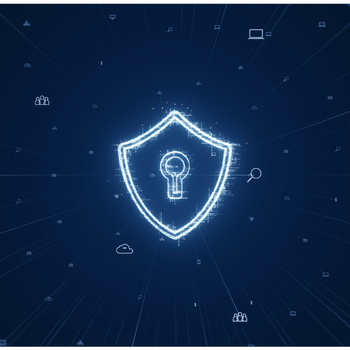Cybersecurity in 2023: what can we expect from new risks and challenges?
 As technology advances, cybercriminals are expected to follow new trends. When guessing the types of attacks likely to keep growing in 2023, some stand out as major headaches for companies still finding their feet in cybersecurity.
As technology advances, cybercriminals are expected to follow new trends. When guessing the types of attacks likely to keep growing in 2023, some stand out as major headaches for companies still finding their feet in cybersecurity.
Below is a list of some of the top cybersecurity trends for 2023. They will help you plan and prepare by knowing what to expect to avoid problems linked to cybercriminal attacks, which can strike all types of businesses.
Security in the hybrid and remote work models
Hybrid and remote working models have become more common and more frequently adopted since 2020. With so many people working from home (or any other location with Wi-Fi and a power outlet), protecting data and keeping the business safe have become much more complex.
The trend for 2023 is for cybercriminals to take advantage of the use of both unprotected home networks and public networks, making it easier and more vulnerable to a range of cyberattacks, such as ransomware. And the problem lies not only in the difficulties to secure and monitor all the networks and devices used to perform corporate work.
With remote working, more and more employees are joining teams that don't know each other. This makes it easier to fall prey to phishing scams in which a criminal poses as a co-worker, for example. As a result, staff awareness of cybersecurity best practices has also become even more critical.
Internet of Things (IoT) and cloud security
It is estimated that by 2026 there will be 64 billion IoT-enabled devices in the world. These correspond to all physical devices that connect to the Internet and share data, except computers, cell phones, tablets, and servers. This is the case, for example, with smartwatches, smart TVs, connected refrigerators, and voice assistants.
Unsurprisingly, this growth in IoT devices has created a rich new field of opportunity for cybercriminals. The biggest risks associated with IoT devices are:
-
An increase in the attack surface with the opening of new gateways for criminals, who until recently only had computers, laptops, and, at most, mobile phones as possible targets for their attacks.
-
These devices usually have very little processing and storage capacity, which makes it difficult to implement other layers of protection to protect them, such as firewalls and antiviruses. In other words, they are much simpler gateways to access, and from them, criminals gain access to other devices connected to the same network.
There is a global trend among government initiatives to encourage manufacturers to increase the security of these devices. In the United States, for example, the intention is to classify all IoT devices using a labeling system that warns consumers of which threats a particular device is susceptible to.
"Zero Trust" to become the new standard
Zero Trust is a cybersecurity strategy that is based on the idea of "never trust, always verify". In other words, always assume that there are internal and external threats in a system, and as such, it is necessary to always validate accesses, establish the privileges of each person, and manage the actions performed on a network, among others. This translates into highly secure multilayer systems in which even logged-in and authenticated users are constantly revalidated to access the different layers and tools available.
Cybersecurity culture
This trend has appeared in virtually every cybersecurity report for years – and remains one of the most important.
After all, many companies continue to put off their plans to improve cybersecurity in part because they believe that cyberattacks are the exclusive problem of multinational giants. So, despite advances made concerning the topic year by year, there is still a long way to go.
And if you must choose a single trend listed here to adopt in your company, building a culture of cybersecurity among your employees is certainly the best first step.
It's important to make your teams aware of the threats that exist on the Internet, ensuring that good security practices are a fundamental part of each employee's daily actions. Employers and employees can no longer deal with cybersecurity as if it were only an IT department issue: data protection is everyone's responsibility and requires collaboration across the board.
You don't need to develop advanced technical skills to learn how to dodge social engineering scams, like phishing, which are so common in corporate attacks. Moreover, learning a few protective measures, such as secure password use and the importance of two-factor authentication, can make a huge difference not only to the security of the organization but to the security of the personal lives of each employee!
Promoting a culture of digital security awareness should be a central element of the business strategy in every organization that wants to become increasingly secure and up-to-date.
Some companies even specialize in gamified cybersecurity training, which engages employees in a continuous learning process and the development of increasingly conscious habits. This is the case of Hacker Rangers and you can find out more by clicking here!
Article originally written in Portuguese by Perallis Security Content Team: O ano só começa depois do Carnaval? Confira mais algumas tendências de cibersegurança para 2023! — Perallis Security
